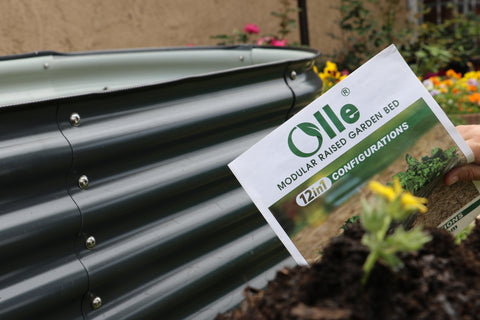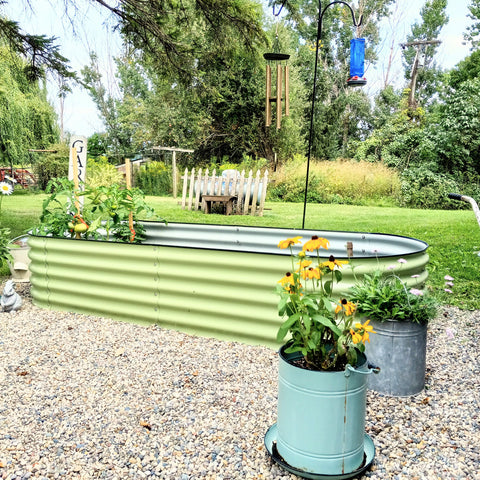Knowledge from Olle Garden Bed: How to Predict Frost And Protect Your Garden
From gusts to excessive rain, weather conditions can cause serious damage to family gardens. However, nothing causes more extensive damage to cold sensitive plants than freezing temperature. Predicting frost can be tricky, but learning how to do it can give gardeners an advantage in protecting their tender vegetable plants. The following content also has some reference value for raised garden beds.
Differences between frost and frost prediction
Frost occurs when the ground temperature reaches 29 to 32 degrees Fahrenheit (- 1.7 to 0 degrees Celsius). Exposure to 29 degrees Fahrenheit for 5 to 10 minutes can severely damage frost tender crops such as tomatoes and peppers. It takes longer exposure at 32 degrees F to cause similar damage.
Crops such as broccoli and lettuce can withstand frost, but can be killed by moderate freezing. Moderate freezing means that the temperature is kept between 25 (-3.9C.) and 28 (-2.2C.) degrees. Peas and spinach can survive at these temperatures, but when the thermometer drops below 24 degrees Fahrenheit (- 4.4 degrees Celsius), they are severely frozen.

Frost weather forecast factors
If you have ever been surprised by a frost covered garden in the morning, you are not alone. Frost sometimes seems very unpredictable, even if the official overnight temperature remains above 32 degrees Fahrenheit (0 degrees Celsius), frost may occur. The following are the reasons why frost is difficult to predict:
- The official temperature is 4 to 6 feet (1.2 – 1.8 meters) above the ground. Cold air is denser than warm air, and it settles closest to the ground, while warm air rises. This makes it possible for the ground temperature to reach 32 degrees Fahrenheit (0 degrees Celsius), even though the official overnight temperature is higher.
- The sinking cold air will cause unstable frost cover. Plants at low altitudes may be damaged by cold, while plants at high altitudes will survive.
- Spotted frost may be caused by soil conditions. The moisture in the soil acts as a thermal conductor. As night falls, the moist soil slowly releases stored heat, which prevents frost from forming near the surface.
- The number of hours between sunset and sunrise will affect the formation of frost. Compared with spring, the long night in autumn allows more time for heat to escape and surface temperature to cool.
- Frost is more likely to occur on a sunny and windless night. Clouds emit infrared energy, which helps prevent cooling near the Earth's surface.
- Frost is unlikely to occur on a windy night. The wind mixes the warm and cold air layers in the atmosphere. This prevents cold air from settling near the ground.
How to judge whether there will be frost
Dew point is a useful tool for predicting frost. Warm air can hold more water than cold air. As the ambient temperature drops, it reaches the point where the air can no longer hold its water content and form dew.
If there is no condensation of water vapor, the temperature cannot be lower than the dew point. This change in the state of water produces a small amount of heat, which usually prevents the ambient temperature from falling. If the temperature decreases further, the dew point will also decrease. This results in fog, which, like clouds, emits infrared energy.

To accurately predict frost, look for the following clues:
- The minimum overnight temperature is predicted to be below 40 degrees Fahrenheit (4.4 degrees Celsius).
- Dew point is lower than 40 ° F.
- A cloudless night. (Please note that the sky can clear up overnight.
- A calm night.
If you suspect frost may form, please remove or take measures to protect your tender vegetable plants by covering them with old sheets, plant blankets, bell shades or cardboard. Setting up low or high tunnels can also keep heat and prevent cold damage.
